Intro
Learn to recognize heart attack signs, including cardiac arrest symptoms, chest pain, and shortness of breath, to promptly seek medical help and prevent cardiovascular damage.
Heart attacks are a leading cause of death worldwide, and recognizing the signs of a heart attack can be a matter of life and death. It is essential to understand the symptoms and take immediate action to prevent long-term damage or even death. A heart attack, also known as myocardial infarction, occurs when the blood flow to the heart is blocked, causing damage to the heart muscle. The sooner medical attention is sought, the better the chances of survival and recovery.
The importance of recognizing heart attack signs cannot be overstated. Many people are unaware of the warning signs, and this lack of awareness can lead to delayed medical attention, resulting in increased morbidity and mortality. Moreover, some individuals may experience mild or no symptoms at all, making it even more crucial to be aware of the risk factors and signs of a heart attack. By educating oneself and others about the signs and symptoms of a heart attack, we can work towards reducing the incidence of heart-related deaths and improving overall cardiovascular health.
Heart attacks can affect anyone, regardless of age, sex, or background. However, certain factors can increase the risk of having a heart attack, such as high blood pressure, high cholesterol, smoking, obesity, and family history. It is vital to be aware of these risk factors and take steps to mitigate them. Regular exercise, a balanced diet, and stress management can all contribute to a healthy heart and reduce the risk of a heart attack. By understanding the signs and symptoms of a heart attack and taking preventive measures, we can all play a role in promoting heart health and reducing the burden of cardiovascular disease.
Understanding Heart Attack Symptoms
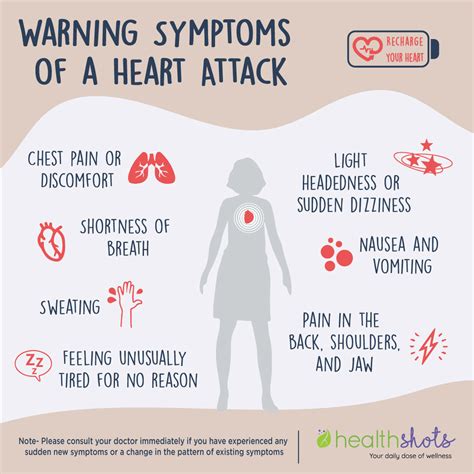
The symptoms of a heart attack can vary from person to person, but there are some common signs to look out for. Chest pain or discomfort is the most common symptom, often described as a feeling of pressure, tightness, or heaviness in the chest. This pain can radiate to the arms, back, neck, jaw, or stomach. Other symptoms may include shortness of breath, nausea or vomiting, lightheadedness or dizziness, fatigue, and cold sweats. It is essential to recognize these symptoms and seek medical attention immediately if they occur.
Risk Factors For Heart Attack
The risk factors for a heart attack can be divided into modifiable and non-modifiable factors. Modifiable risk factors include high blood pressure, high cholesterol, smoking, obesity, physical inactivity, and stress. Non-modifiable risk factors include age, family history, and genetics. By addressing the modifiable risk factors, individuals can significantly reduce their risk of having a heart attack. This can be achieved through lifestyle changes, such as regular exercise, a balanced diet, and stress management, as well as medical interventions, such as medication and surgery.Diagnosing A Heart Attack
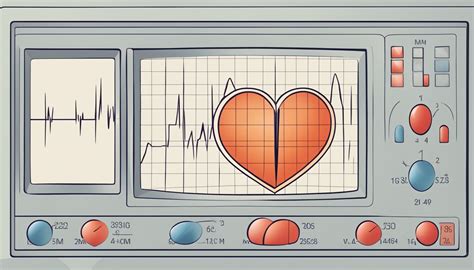
Diagnosing a heart attack typically involves a combination of physical examination, medical history, and diagnostic tests. The doctor will perform a physical examination, take a medical history, and order diagnostic tests, such as electrocardiogram (ECG), blood tests, and imaging tests, such as echocardiogram or coronary angiogram. The ECG is a crucial test for diagnosing a heart attack, as it can show signs of heart damage or arrhythmias. Blood tests can also help diagnose a heart attack by measuring the levels of certain enzymes, such as troponin, which are released into the bloodstream when the heart muscle is damaged.
Treatment Options For Heart Attack
The treatment options for a heart attack depend on the severity of the attack and the individual's overall health. The primary goal of treatment is to restore blood flow to the heart muscle and prevent further damage. This can be achieved through medications, such as thrombolytics, anticoagulants, and antiplatelets, which can help dissolve blood clots, prevent new clots from forming, and reduce the risk of further heart attacks. In some cases, surgery may be necessary, such as coronary angioplasty or coronary artery bypass grafting (CABG). CABG involves grafting a healthy blood vessel onto the blocked coronary artery, while angioplasty involves using a balloon to open up the blocked artery.Preventing Heart Attacks
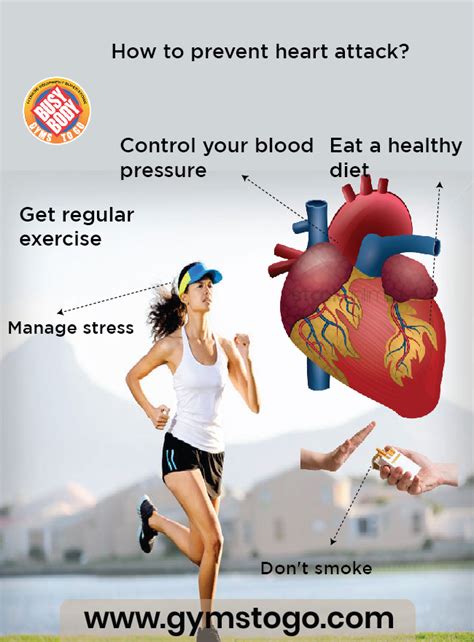
Preventing heart attacks involves addressing the modifiable risk factors and making lifestyle changes to promote heart health. Regular exercise, such as brisk walking, cycling, or swimming, can help reduce the risk of heart disease. A balanced diet, rich in fruits, vegetables, whole grains, and lean protein, can also help reduce the risk of heart disease. Additionally, stress management techniques, such as meditation, yoga, or deep breathing, can help reduce stress and promote overall well-being.
Recovering From A Heart Attack
Recovering from a heart attack requires a comprehensive approach that includes medical treatment, lifestyle changes, and emotional support. After a heart attack, individuals may need to make significant lifestyle changes, such as quitting smoking, reducing alcohol consumption, and increasing physical activity. They may also need to take medications to manage their condition and prevent further heart attacks. Emotional support from family, friends, and support groups can also play a crucial role in the recovery process.Complications Of Heart Attack
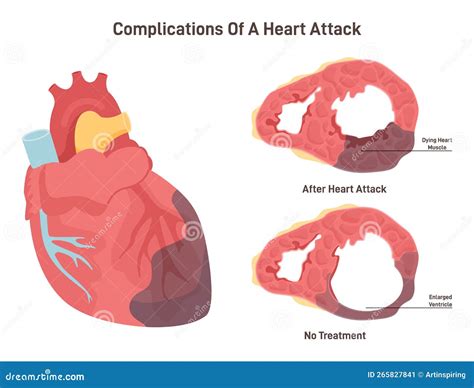
The complications of a heart attack can be severe and long-lasting. Some common complications include heart failure, arrhythmias, and cardiac arrest. Heart failure occurs when the heart is unable to pump enough blood to meet the body's needs, while arrhythmias refer to abnormal heart rhythms. Cardiac arrest occurs when the heart suddenly stops beating, and can be fatal if not treated promptly. Other complications may include pericarditis, myocardial rupture, and ventricular septal defect.
Living With Heart Disease
Living with heart disease requires a long-term commitment to managing the condition and reducing the risk of further heart attacks. This can involve making lifestyle changes, such as regular exercise, a balanced diet, and stress management, as well as taking medications and attending regular check-ups with a healthcare provider. It is also essential to be aware of the signs and symptoms of a heart attack and to seek medical attention immediately if they occur.Current Research On Heart Attacks
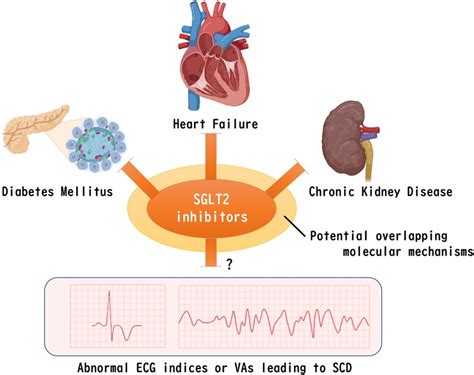
Current research on heart attacks is focused on improving our understanding of the condition and developing new treatments and prevention strategies. Some areas of research include the development of new medications, such as antiplatelet agents and anticoagulants, as well as the use of stem cells and gene therapy to repair damaged heart tissue. Additionally, researchers are exploring the role of lifestyle factors, such as diet and exercise, in preventing heart attacks and promoting overall cardiovascular health.
Future Directions For Heart Attack Treatment
The future directions for heart attack treatment are promising, with several new technologies and therapies on the horizon. Some of these include the use of robotic surgery, which can improve the precision and accuracy of surgical procedures, as well as the development of new imaging technologies, such as cardiac MRI and CT scans, which can help diagnose and monitor heart disease. Additionally, researchers are exploring the use of artificial intelligence and machine learning to improve the diagnosis and treatment of heart attacks.Conclusion And Final Thoughts

In conclusion, recognizing the signs of a heart attack is crucial for prompt medical attention and reducing the risk of long-term damage or death. By understanding the symptoms, risk factors, and treatment options, individuals can take steps to promote heart health and reduce the burden of cardiovascular disease. It is essential to be aware of the latest research and advancements in heart attack treatment and to make lifestyle changes to prevent heart attacks. By working together, we can reduce the incidence of heart-related deaths and improve overall cardiovascular health.
We invite you to share your thoughts and experiences on recognizing the signs of a heart attack. Have you or someone you know experienced a heart attack? What steps have you taken to promote heart health and reduce the risk of heart disease? Share your story and let's work together to promote heart health and reduce the burden of cardiovascular disease.
What are the common symptoms of a heart attack?
+The common symptoms of a heart attack include chest pain or discomfort, shortness of breath, nausea or vomiting, lightheadedness or dizziness, fatigue, and cold sweats.
How can I reduce my risk of having a heart attack?
+You can reduce your risk of having a heart attack by making lifestyle changes, such as regular exercise, a balanced diet, and stress management, as well as addressing modifiable risk factors, such as high blood pressure, high cholesterol, and smoking.
What should I do if I think I am having a heart attack?
+If you think you are having a heart attack, call emergency services immediately and seek medical attention. Do not delay, as prompt treatment can significantly improve outcomes and reduce the risk of long-term damage or death.
